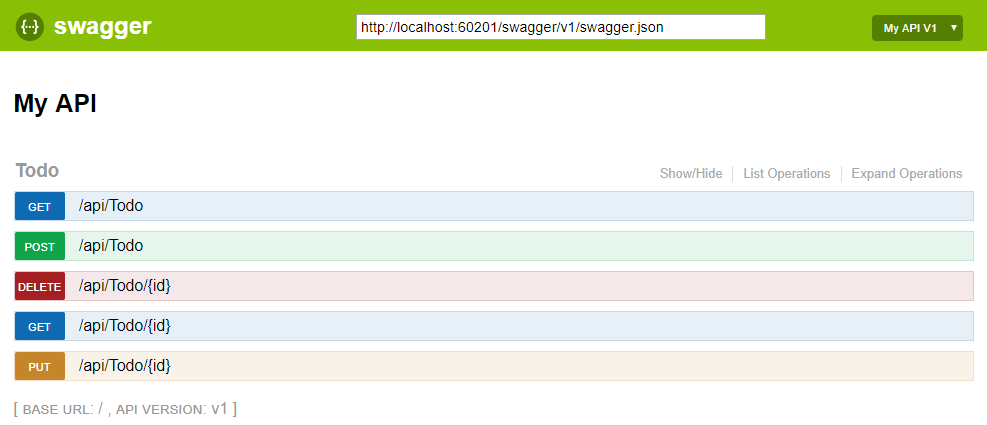swagger上传文件并支持jwt认证
背景
由于swagger不仅提供了自动实现接口文档的说明而且支持页面调试,告别postman等工具,无需开发人员手动写api文档,缩减开发成本得到大家广泛认可
但是由于swagger没有提供上传文件的支持,所以只能靠开发人员自己实现。今天就来看看如何扩展swagger达到上传文件的需求
动起小手手
1安装swagger
nuget安装Swashbuckle.AspNetCore.Swagger组件
2设置生成xml
右键项目>属性>生成

相应的把其他需要生成文档说明的项目也按上步骤进行设置xml
关键swagger代码
using Microsoft.AspNetCore.Builder; using Microsoft.Extensions.Configuration; using Microsoft.Extensions.DependencyInjection; using Microsoft.Extensions.PlatformAbstractions; using Swashbuckle.AspNetCore.Swagger; using System; using System.Collections.Generic; using System.IO; using System.Linq; using System.Threading.Tasks; namespace Chaunce.Api.App_Start { /// <summary> /// SwaggerConfig /// </summary> public class SwaggerConfig { /// <summary> /// InitSwagger /// </summary> /// <param name="services"></param> public static void InitSwagger(IServiceCollection services) { services.AddSwaggerGen(c => { c.OperationFilter<SwaggerFileUploadFilter>();//增加文件过滤处理 var security = new Dictionary<string, IEnumerable<string>> { { "Bearer", new string[] { } }, }; c.AddSecurityRequirement(security);//添加一个必须的全局安全信息,和AddSecurityDefinition方法指定的方案名称要一致,这里是Bearer。 var basePath = PlatformServices.Default.Application.ApplicationBasePath;// 获取到应用程序的根路径 var xmlApiPath = Path.Combine(basePath, "Chaunce.Api.xml");//api文件xml(在以上步骤2设置生成xml的路径) var xmlModelPath = Path.Combine(basePath, "Chaunce.ViewModels.xml");//请求modelxml c.IncludeXmlComments(xmlApiPath); c.IncludeXmlComments(xmlModelPath); c.SwaggerDoc("v1", new Info { Title = "Chaunce数据接口", Version = "v1", Description = "这是一个webapi接口文档说明", TermsOfService = "None", Contact = new Contact { Name = "Chaunce官网", Email = "info@Chaunce.com", Url = "http://blog.Chaunce.top/" }, License = new License { Name = "Swagger官网", Url = "http://swagger.io/", } }); c.IgnoreObsoleteActions(); c.AddSecurityDefinition("Bearer", new ApiKeyScheme { Description = "权限认证(数据将在请求头中进行传输) 参数结构: \"Authorization: Bearer {token}\"", Name = "Authorization",//jwt默认的参数名称 In = "header",//jwt默认存放Authorization信息的位置(请求头中) Type = "apiKey" });//Authorization的设置 }); } /// <summary> /// ConfigureSwagger /// </summary> /// <param name="app"></param> public static void ConfigureSwagger(IApplicationBuilder app) { app.UseSwagger(); // Enable middleware to serve swagger-ui (HTML, JS, CSS, etc.), specifying the Swagger JSON endpoint. app.UseSwagger(c => { c.RouteTemplate = "docs/{documentName}/docs.json";//使中间件服务生成Swagger作为JSON端点(此处设置是生成接口文档信息,可以理解为老技术中的webservice的soap协议的信息,暴露出接口信息的地方) c.PreSerializeFilters.Add((swaggerDoc, httpReq) => swaggerDoc.Info.Description = httpReq.Path);//请求过滤处理 }); app.UseSwaggerUI(c => { c.RoutePrefix = "docs";//设置文档首页根路径 c.SwaggerEndpoint("/docs/v1/docs.json", "V1");//此处配置要和UseSwagger的RouteTemplate匹配 //c.SwaggerEndpoint("/swagger/v1/swagger.json", "V1");//默认终结点 c.InjectStylesheet("/swagger-ui/custom.css");//注入style文件 }); } } }
swagger过滤器
using Microsoft.AspNetCore.Http; using Swashbuckle.AspNetCore.Swagger; using Swashbuckle.AspNetCore.SwaggerGen; using System; using System.Collections.Generic; using System.Linq; using System.Threading.Tasks; namespace Chaunce.Api.Help { /// <summary> /// swagger文件过滤器 /// </summary> public class SwaggerFileUploadFilter : IOperationFilter { /// <summary> /// swagger过滤器(此处的Apply会被swagger的每个接口都调用生成文档说明,所以在此处可以对每一个接口进行过滤操作) /// </summary> /// <param name="operation"></param> /// <param name="context"></param> public void Apply(Operation operation, OperationFilterContext context) { if (!context.ApiDescription.HttpMethod.Equals("POST", StringComparison.OrdinalIgnoreCase) && !context.ApiDescription.HttpMethod.Equals("PUT", StringComparison.OrdinalIgnoreCase)) { return; } var apiDescription = context.ApiDescription; var parameters = context.ApiDescription.ParameterDescriptions.Where(n => n.Type == typeof(IFormFileCollection) || n.Type == typeof(IFormFile)).ToList();//parameterDescriptions包含了每个接口所带所有参数信息 if (parameters.Count() <= 0) { return; } operation.Consumes.Add("multipart/form-data"); foreach (var fileParameter in parameters) { var parameter = operation.Parameters.Single(n => n.Name == fileParameter.Name); operation.Parameters.Remove(parameter); operation.Parameters.Add(new NonBodyParameter { Name = parameter.Name, In = "formData", Description = parameter.Description, Required = parameter.Required, Type = "file", //CollectionFormat = "multi" }); } } } }


打开浏览器http://localhost:8532/docs/


还没有结束,我们看看如何让Jwt的认证信息自动存在请求头免去每次手动塞
点击


(实际情况是填写的信息格式是:Bearer *************(Bearer与后面信息有一个空格))
此时随意访问任何api,都会将以上信息自动塞入header中进行请求,如下验证

至此目的都达到了
参考:
http://www.cnblogs.com/Erik_Xu/p/8904854.html#3961244
https://github.com/domaindrivendev/Swashbuckle

作者:Chaunce
GitHub:https://github.com/liuyl1992
公众号请搜:架构师高级俱乐部 SmartLife_com

声明:原创博客请在转载时保留原文链接或者在文章开头加上本人博客地址,如发现错误,欢迎批评指正。凡是转载于本人的文章,不能设置打赏功能等盈利行为
分类:
.netCore










【推荐】国内首个AI IDE,深度理解中文开发场景,立即下载体验Trae
【推荐】编程新体验,更懂你的AI,立即体验豆包MarsCode编程助手
【推荐】抖音旗下AI助手豆包,你的智能百科全书,全免费不限次数
【推荐】轻量又高性能的 SSH 工具 IShell:AI 加持,快人一步
· AI与.NET技术实操系列:向量存储与相似性搜索在 .NET 中的实现
· 基于Microsoft.Extensions.AI核心库实现RAG应用
· Linux系列:如何用heaptrack跟踪.NET程序的非托管内存泄露
· 开发者必知的日志记录最佳实践
· SQL Server 2025 AI相关能力初探
· winform 绘制太阳,地球,月球 运作规律
· 震惊!C++程序真的从main开始吗?99%的程序员都答错了
· AI与.NET技术实操系列(五):向量存储与相似性搜索在 .NET 中的实现
· 超详细:普通电脑也行Windows部署deepseek R1训练数据并当服务器共享给他人
· 【硬核科普】Trae如何「偷看」你的代码?零基础破解AI编程运行原理